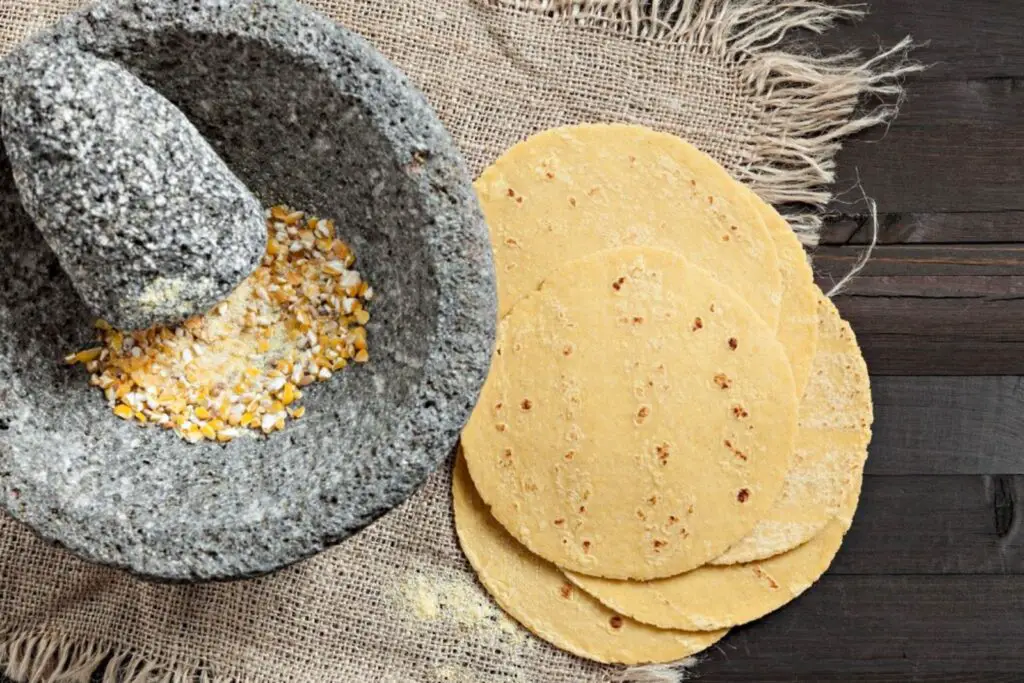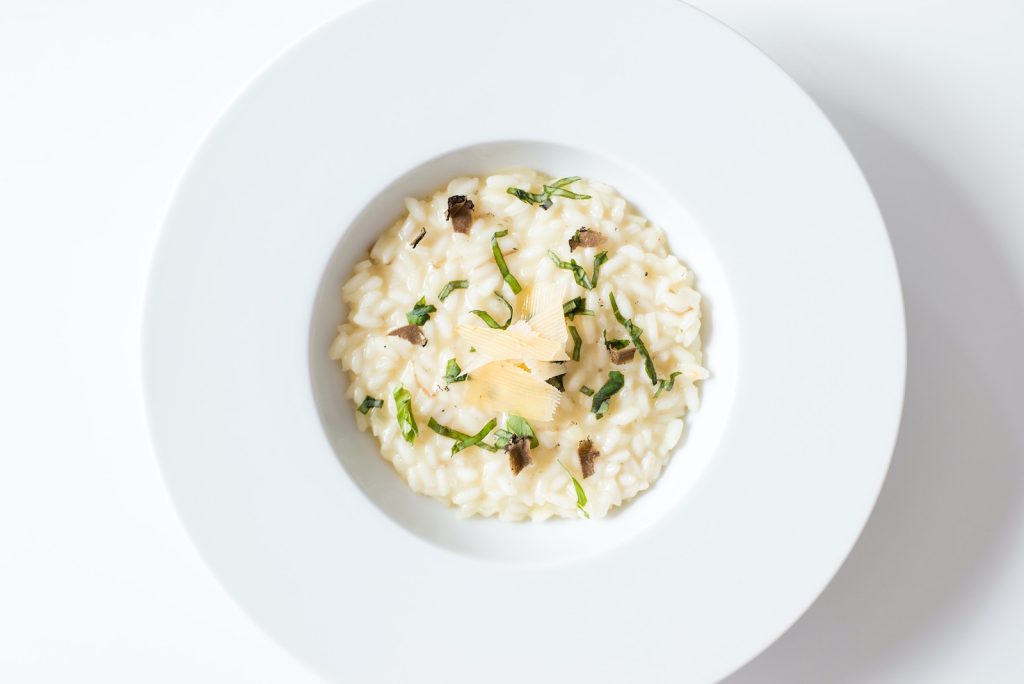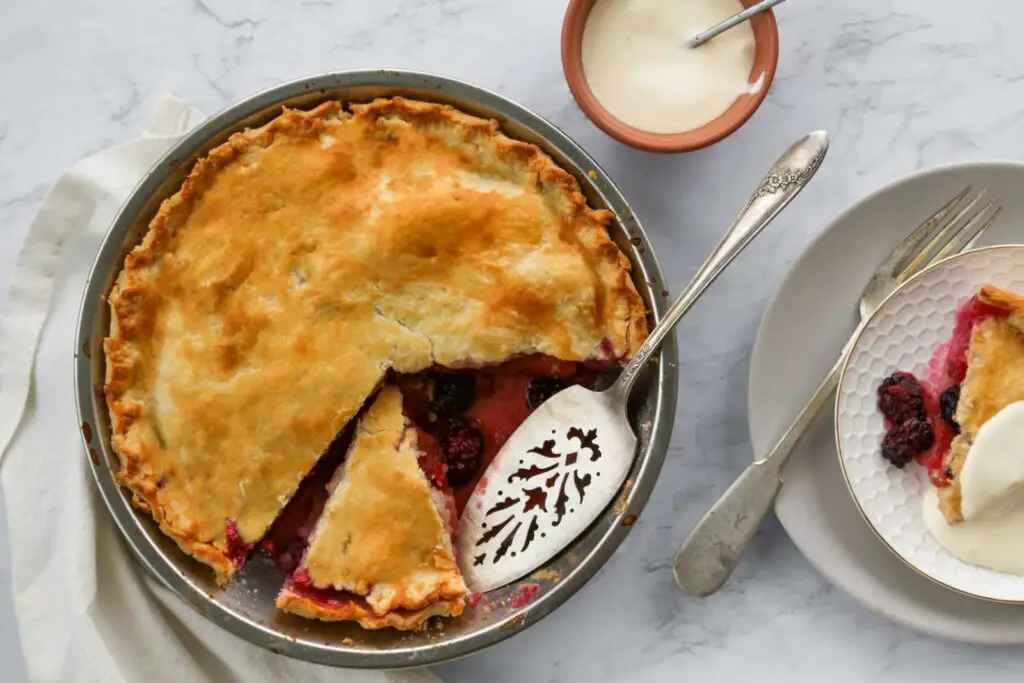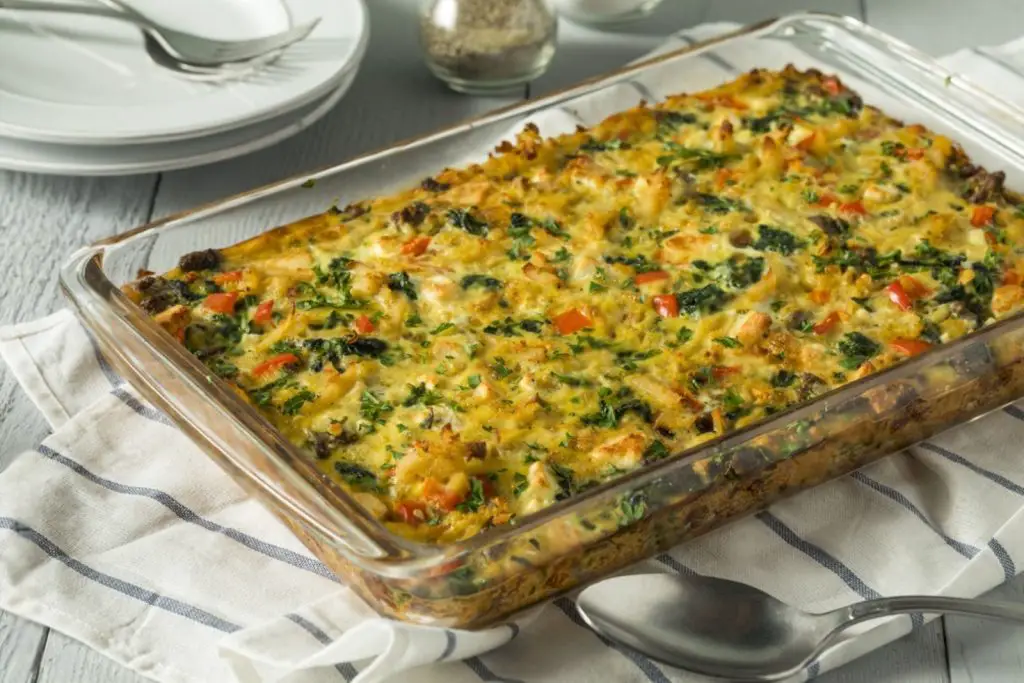
Apple cake is a delicious dessert made with fresh apples, spices, and a moist cake base. It’s a treat that’s loved by many for its comforting flavors and aromatic appeal. Whether you’ve baked too many apple cakes or want to prepare ahead for special occasions, freezing apple cake can be a convenient way to preserve its taste and texture. This article presents a step-by-step guide on how to freeze apple cake while maintaining its delightful qualities for later enjoyment.
Learn the process of freezing apple cake:
Step 1: Allow the Cake to Cool
Before you proceed with freezing your apple cake, it’s imperative to allow the cake to cool completely. This seemingly simple step holds significant importance in maintaining the quality of your frozen dessert.
When the apple cake comes out of the oven, it carries a considerable amount of residual heat. If you were to immediately wrap and freeze it while it’s still warm, you would risk the formation of condensation inside the packaging. Condensation occurs when warm air meets cooler air, resulting in the conversion of moisture vapor into water droplets. This moisture buildup can adversely impact the texture, flavor, and overall quality of your apple cake.
By allowing the cake to cool at room temperature, you’re essentially allowing the excess heat to dissipate. This gradual cooling process helps to minimize the temperature difference between the cake and its surroundings, reducing the likelihood of condensation forming during the freezing stage. As the cake cools, any internal moisture that might be present within the cake will also have a chance to evenly distribute and evaporate.
Ensuring that your apple cake is thoroughly cooled before freezing serves as a proactive measure to safeguard its delicious characteristics. The absence of excess moisture within the packaging helps maintain the cake’s structural integrity. Moreover, it prevents the formation of ice crystals that can alter the cake’s texture upon thawing.
Is it better to freeze baked or unbaked apple cake?
Baked apple cake is more common for freezing. Unbaked batter might have a different texture after thawing due to the freezing process affecting the leavening agents.
Step 2: Portion the Cake
Once your apple cake has cooled completely, the next step in the freezing process involves portioning the cake before you prepare it for freezing. This step might seem straightforward, but it plays a crucial role in ensuring the convenience and quality of your frozen dessert.
Deciding on the portions in which you’d like to freeze the apple cake is all about practicality and ease of future consumption. Slicing the cake into individual servings or manageable slices serves several purposes:
- Convenient Thawing: Smaller portions of apple cake thaw more quickly and evenly compared to freezing the entire cake. When you’re ready to enjoy a slice of your frozen treat, you won’t need to wait as long for it to reach a desirable serving temperature.
- Reduced Waste: By portioning the cake, you’re less likely to thaw and refreeze more cake than you can consume. This minimizes wastage and helps maintain the cake’s quality, as repeated thawing and refreezing can negatively affect its texture and flavor.
- Flexible Serving Sizes: Individual portions provide flexibility. Whether you’re looking for a small treat or a larger indulgence, you can easily select the right-sized portion to satisfy your craving.
- Preserved Texture: Larger cakes might lose some of their original moisture and texture during the freezing and thawing processes. Portioned slices are more likely to retain the cake’s desired consistency.
- Portion Control: If you’re trying to manage your servings, having pre-portioned slices makes it easier to control your intake and enjoy your dessert in moderation.
When slicing the cake, aim for portions that are suitable for a single serving. You can do this by cutting the cake into wedges, squares, or rectangular slices. For round cakes, wedges are a common choice, while squares or rectangles are suitable for sheet cakes.
Can I freeze an entire apple cake or just slices?
While freezing an entire cake is possible, it’s often more practical to freeze individual slices. Portioning allows for easier thawing and minimizes potential moisture loss.
Step 3: Wrap the Cake in Plastic Wrap
As you prepare your apple cake for freezing, wrapping each individual portion tightly with plastic wrap is a crucial step that significantly contributes to maintaining the cake’s quality during its time in the freezer. This seemingly simple action serves a dual purpose: it guards against freezer burn and helps preserve the cake’s essential moisture content.
- Preventing Freezer Burn: Freezer burn is a common issue that occurs when food is exposed to air within the freezer. It leads to the dehydration of the outer layers of the food, resulting in changes to texture, flavor, and overall quality. When it comes to your apple cake, freezer burn can manifest as dry, discolored, or toughened areas on the cake’s surface.
- By wrapping each portion of the apple cake tightly with plastic wrap, you create a protective barrier that minimizes air exposure. The plastic wrap adheres closely to the cake’s surface, leaving very little room for air to circulate and cause freezer burn. This safeguarding measure helps preserve the cake’s appearance, taste, and texture, ensuring that your frozen dessert remains as delectable as it was when it was first baked.
- Preserving Moisture: Moisture is a key factor in maintaining the desirable texture of your apple cake. Wrapping the cake in plastic wrap not only prevents moisture loss due to freezer burn but also retains the cake’s internal moisture. This is particularly important because the freezing process can draw out moisture from unprotected surfaces, leading to dryness and a potentially compromised eating experience.
By ensuring that there are no exposed areas on the cake’s surface, you’re taking steps to retain the moisture that contributes to the cake’s moist and tender interior. The plastic wrap acts as a barrier, preventing the escape of moisture and maintaining the cake’s overall quality.
To wrap the cake effectively, gently press the plastic wrap against the cake’s surface, starting from the top and working your way down. Make sure that all sides of the cake are covered, leaving no gaps or openings where air could seep in. This meticulous wrapping process pays off in preserving the cake’s taste and texture.
Can I use aluminum foil for wrapping?
Yes, aluminum foil can be used for wrapping apple cake. However, plastic wrap or resealable bags offer better moisture protection, preventing freezer burn and maintaining cake quality. Foil can be used if other options are unavailable.
Step 4: Place in Freezer-Safe Containers
After wrapping each portion of your apple cake in plastic wrap, the next pivotal step in the freezing process is to transfer these wrapped portions into freezer-safe containers or resealable plastic bags. This step not only helps organize your frozen treats but also plays a critical role in preserving the cake’s flavor and quality during its time in the freezer.
- Preservation of Flavor and Quality: Freezer-safe containers and resealable plastic bags offer airtight seals that prevent the intrusion of unwanted odors and moisture. When your apple cake is stored alongside other items in the freezer, there’s a possibility that it could absorb flavors and scents from neighboring foods. Using containers with tight-fitting lids or sealing plastic bags ensures that the cake’s distinct apple-infused aroma and taste remain intact, delivering an enjoyable eating experience when you choose to thaw and savor it.
- Protection Against Freezer Burn: Just as wrapping the cake in plastic wrap shields it from freezer burn, placing the wrapped portions in freezer-safe containers provides an additional layer of protection. These containers act as a barrier, shielding the cake from cold air and potential fluctuations in temperature within the freezer. This defense against temperature variations minimizes the chances of freezer burn affecting the cake’s texture and flavor.
- Preventing Moisture Infiltration: The airtight seals offered by freezer-safe containers and resealable plastic bags also guard against moisture infiltration. Moisture can compromise the cake’s texture and lead to undesirable changes when it’s thawed. By preventing moisture from entering the packaging, you’re taking proactive steps to maintain the cake’s moist and delicious qualities.
- Organized Storage: Using dedicated freezer-safe containers or bags for your wrapped cake portions helps keep your freezer organized. Proper organization makes it easier to locate and retrieve the desired portion of apple cake without having to disturb other items in the freezer.
When placing the wrapped portions in containers or bags, ensure that you’re gentle to avoid damaging the cake. If using bags, squeeze out any excess air before sealing them to reduce the chances of freezer burn.
Step 5: Label with Date and Contents
As you complete the process of packaging your apple cake portions for freezing, an often overlooked yet critical step is labeling each container or bag with the freezing date and a concise description of the contents. This seemingly simple act carries substantial benefits, helping you maintain organization and ensuring that your frozen apple cake remains of the highest quality.
- Tracking Freezing Duration: When you label each container or bag with the date on which you placed the cake in the freezer, you create a clear record of how long the cake has been frozen. This information is invaluable because frozen foods, including apple cake, have recommended storage durations to maintain optimal flavor and texture. By knowing the freezing date, you can avoid inadvertently keeping the cake in the freezer for an extended period that might compromise its quality.
- Easy Identification: Over time, the contents of your freezer can accumulate, making it challenging to distinguish one item from another. Labeling your containers or bags with a brief description of the contents—such as “Apple Cake Slices”—ensures that you can quickly identify your frozen dessert without needing to unwrap or open every container. This is particularly helpful when you’re in a rush or seeking a specific treat.
- Preventing Waste: Clear labeling allows you to keep track of the items in your freezer inventory. By knowing what you have and how long it’s been frozen, you can prioritize using older items first to prevent unnecessary food waste.
- Enhancing Meal Planning: Labeled containers facilitate meal planning and preparation. If you’re hosting guests or simply looking for a quick dessert option, having a clear record of your frozen apple cake allows you to plan ahead and allocate the right amount of time for thawing.
To effectively label your containers or bags, consider using adhesive labels, masking tape, or permanent markers. Write the freezing date in a clear format (e.g., MM/DD/YYYY) and provide a brief description of the contents. If you have multiple portions of apple cake with different freezing dates, labeling each container individually ensures accurate tracking.
Step 6: Arrange in the Freezer
With your carefully labeled containers of apple cake prepared for freezing, the next step is arranging them inside your freezer. This step might seem straightforward, but it holds significance in ensuring that your frozen treats remain intact, accessible, and well-preserved until you’re ready to enjoy them.
- Protection Against Damage: Placing your labeled containers of apple cake in the freezer involves more than just randomly putting them on the shelves. Your frozen treats can be delicate, and improper placement can lead to damage, deformities, or even crushed portions. To prevent these undesirable outcomes, make sure you handle the containers with care as you arrange them in the freezer.
- Maintaining Quality: Proper arrangement in the freezer contributes to maintaining the quality of your apple cake. When items are crammed together or haphazardly arranged, air circulation can be restricted, leading to uneven freezing and potential development of freezer burn. Organizing the containers ensures that cold air can circulate freely, preserving the texture, flavor, and appearance of your frozen dessert.
- Accessibility: Thoughtful arrangement in the freezer also enhances convenience. Placing the containers in a way that makes them easily accessible ensures that you can retrieve a portion of apple cake without having to disturb other items or rearrange the freezer’s contents. This is particularly beneficial when you’re in a hurry or have limited time to thaw a treat.
- Planning Ahead: If you’ve labeled your containers with freezing dates, arranging them with the earliest frozen items at the front allows you to prioritize using those first. This rotational system ensures that you enjoy your apple cake while it’s still at its peak quality and flavor.
When arranging your labeled containers of apple cake, consider the following tips:
- Use Stable Surfaces: If you’re using shelves, make sure they’re stable and won’t wobble, which could cause items to shift or fall.
- Avoid Overcrowding: Leave sufficient space between containers to allow cold air to circulate. Overcrowding can lead to uneven freezing and affect the quality of your frozen desserts.
- Consider Container Sizes: Larger containers might need more space, so adjust the arrangement accordingly.
- Stack with Care: If you need to stack containers, do so cautiously to prevent any crushing or damage to the contents.
Step 7: Freeze for up to Three Months
As your carefully arranged and labeled containers of apple cake settle into the freezer, it’s important to be mindful of the optimal duration for which your dessert can be frozen while still retaining its quality. Freezing apple cake is an excellent way to extend its shelf life, but it’s essential to know that even frozen foods have their limits when it comes to maintaining their flavor, texture, and overall appeal.
- The Three-Month Rule: Apple cake, like many other frozen foods, is best enjoyed within a specific timeframe. In the case of apple cake, freezing it for up to three months is generally considered the ideal duration to ensure that its taste and quality remain largely unchanged. During this period, the cake’s moisture and flavor are well-preserved, allowing you to enjoy a slice that’s as close to freshly baked as possible.
- Preventing Freezer Burn and Flavor Loss: Beyond the three-month mark, the cake might begin to show signs of deterioration. Freezer burn, which we’ve discussed before, can start to manifest as ice crystals form on the surface of the cake. These ice crystals can lead to moisture loss and a change in texture, making the cake less enjoyable to eat. Additionally, the cake’s flavor can start to degrade, resulting in a less satisfying taste experience.
- Quality Control: By adhering to the three-month guideline, you’re practicing quality control when it comes to frozen desserts. It’s important to note that while the cake might still be safe to eat beyond this timeframe, the eating experience might not be up to par with your expectations.
- Rotational Consumption: To make the most of your frozen apple cake, consider practicing a rotational approach. Use the “first in, first out” principle, where you consume the oldest frozen portions first. This ensures that you enjoy your apple cake when it’s at its peak quality and flavor.
Step 8: Thaw and Enjoy
As the moment of enjoyment draws near, and you’re eager to savor your frozen apple cake, the process of thawing becomes a crucial step in ensuring that the cake’s texture, flavor, and overall quality are preserved. To experience your dessert as close to its freshly baked state as possible, it’s essential to understand the best method for thawing your frozen delight.
- Refrigerator Thawing: When the time comes to enjoy your frozen apple cake, resist the temptation to rush the thawing process. The refrigerator is your best ally in this endeavor. Remove the desired portion of cake from the freezer and transfer it to the refrigerator. By allowing the cake to thaw gradually in a controlled environment, you’re ensuring that it maintains its texture and flavor without any abrupt changes.
- Preservation of Texture: Gradual thawing in the refrigerator helps preserve the cake’s texture. The controlled temperature of the refrigerator allows the cake to slowly regain its original moisture content, preventing the formation of excess condensation that can lead to a soggy or unevenly textured cake. This careful approach to thawing ensures that the cake retains its desired consistency, whether it’s a moist layer cake or a tender coffee cake.
- Flavor Retention: Just as texture is maintained through slow thawing, the cake’s flavor is also preserved. The gradual process minimizes the risk of flavor dilution or loss that can occur if the cake is thawed too quickly.
- Avoiding Temperature Shock: Rapid temperature changes can adversely affect the quality of frozen foods. Thawing at room temperature or using heat sources such as a microwave can lead to uneven thawing and, in some cases, can alter the cake’s taste and texture.
- Patience Rewarded: While thawing in the refrigerator might take several hours or even overnight, your patience will be rewarded with a slice of apple cake that closely resembles its freshly baked counterpart. The anticipation will heighten the experience, and you’ll be able to appreciate all the effort you put into freezing and preserving the cake.
What’s the best way to reheat frozen apple cake?
Thaw frozen apple cake in the refrigerator. To reheat, warm slices in the microwave using short intervals or place in a preheated oven at 350°F (175°C) for 10-15 mins. Gradual reheating prevents overcooking and preserves texture.
Other related questions
Can I refreeze apple cake?
It’s generally not recommended to refreeze apple cake once it has been thawed. Thawing and refreezing can lead to texture and flavor degradation. To preserve its quality, consume the thawed cake within a reasonable time after initial thawing.
How do I know if the apple cake has gone bad after being frozen?
Signs of spoiled frozen apple cake include off-putting odor, significant freezer burn, or changes in texture. If it smells sour or rancid, displays excessive ice crystals, or feels excessively dry or mushy, it might have deteriorated. Sensory evaluation can help determine if it’s safe to consume.
Can I freeze apple cake with cream cheese frosting?
While freezing frosted cakes is possible, cream cheese frosting might experience texture changes upon thawing. Consider freezing unfrosted cake and adding frosting later.
Can I freeze apple cake with nuts or fruits?
Yes, you can freeze apple cake with nuts or fruits. Nuts generally freeze well, maintaining texture. Delicate fruits might turn mushy upon thawing; consider their condition post-thawing for best results.








